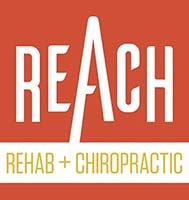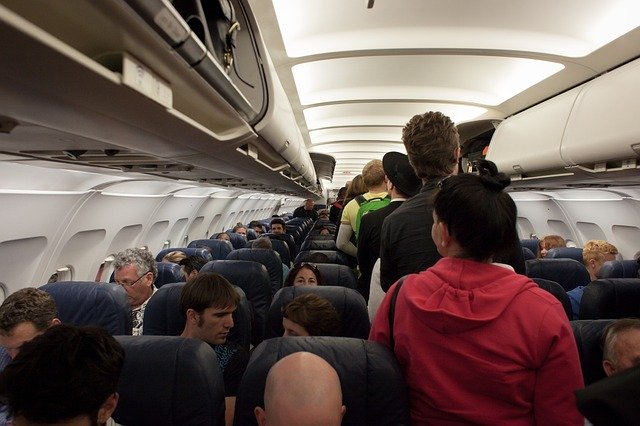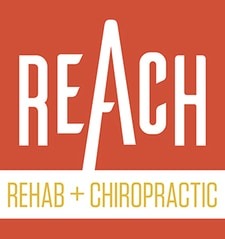Do You Struggle to Travel Pain-Free?
I’m currently on a plane while writing this so what better time to share my thoughts on how to travel pain-free during the holidays?
I thought so too!
What’s problem numero uno with your body in regard to traveling?
Sedentarism. Unless your travel consists of hiking the Appalachian Trail like a badass, you’re probably spending most of the time sitting in a vehicle.
Because it really doesn’t matter whether you’re sitting in front of a desk or in the care for eight hours, the approach to combatting back, neck, and other muscle and joint pain would be essentially the same. The one caveat, however, is at the office you can stand up and move around whenever you want – in a car or plane it’s not so easy.
Without further ado here are your:
Five Tips to Travel Pain-Free
1. Sit with lumbar support
My go-to is the McKenzie lumbar roll, but you don’t necessarily have to purchase a product. You can use a rolled-up towel, pillow, purse jacket to support your low back – your creativity is the only limitation.
Why stick something behind your back while you sit?
You know how you have that curve or arch of your low back while standing? When you sit without something holding that arch, we tend to sit on our tailbone allowing the low back to round. Sure, you could focus on keeping your body upright using your muscles but that fatiguing and it’s much easier to use support and just chill.
Let’s be crystal clear: using lumbar support doesn’t necessarily make prolonged sitting good for you. Sitting with lumbar support is like smoking e-cigs versus cowboy killers, i.e. tobacco – it’s the better alternative (as far as we know).
The point is sitting for an extended amount of time is going to have accumulated negative stress on the body. So, if you want to travel pain-free, it’s best to move whenever you get the chance.
2. Twerk in your seat
I’m being completely serious.
It may look like you’re doing the “I don’t have to go to the bathroom” dance or a weirdo doing inappropriate things with your seat cushion, but twerking in your seat helps induce healthy motion of your spine when it’s not reasonable or possible to stand up and move around.
Don’t worry, you don’t need to make it obvious. You can do a slow & subtle, mid-range tilting of the pelvis forward and backward (I’m doing it right now while this guy is vegging out to the real-life Aladdin remake – not sure how I feel about Big Willy Style as the Genie, and is everything a reiteration nowadays? I digress!) and no one will think you’re Getting’ Jiggy Wit It!
How to do this:
- Roll your pelvis forward and backward – Here are some visual cues:
- Think “J-Lo booty” then “plumber butt”.
- Pull your belt buckle up towards your nose, then drop it down toward your toes.
- Tuck your tailbone, then sit on your “sit bones”.
If you prefer, you can watch the video here.
3. Pound the ground
Do you ever get that numb-butt feeling of your glutes falling asleep from sitting for too long? No matter how comfortable the seat, numb-butt happens and you end up fidgeting – this is your body wanting to move.
BUT what if you’re on cruise control, making great time, and not a rest area for miles? You can get some blood flow and the feeling back into your glutes by alternating pushing your feet into the ground.
To do this you need to make sure your knees are bent and 90 degrees and sitting up tall.
Next, push directly downward into the ground with one foot, relax, then the other – keep alternating for a few cycles.
You should feel your body subtly tilt in the opposite direction of the leg that’s pushing. When the glute contracts maximally it pushes out into the seat further than your relaxed one, thus your body tilts.
It’s a common mistake to push forward while you are pushing down. The quads are a very strong group of muscles that like to take over – they are the ones that induce the pushing forward action. If the top of your thighs are contracting pretty hard without feeling your glutes very much, you’ll need to retry until you get the feel described above.
4. Use supportive baggage when you travel
Look, I know you spend a hefty penny on that slick brushed leather, brass hardware, and an embossed messenger bag (or the vegan alternative, of course), but I’m going to tell you right now those things will almost guarantee you’re not going to travel pain-free. You can get away with it if it’s light and you’re consistently switching sides, but who does that?
Outside of the obvious rolling luggage bags, the better bet is to get a quality backpack (your outdoorsy brands are my go-to) with all the straps and compartments.
The straps on the backpack are not meant to help you aesthetically pull-off the poser Patagonia sustainability and outdoorsman look. Rather, backpack straps work functionally to help distribute the force of the weight more evenly throughout your body.
Literally speaking, if you typically come with too much baggage, making purposeful changes will reduce your incidences of back pain and neck pain.
5. Take micro-breaks while traveling
Getting in some quality movement, e.g., stretching, exercise, before, during, and after a long trip is absolutely paramount.
It’s not always possible, especially on my 5-hour flight to San Diego (poor me!), but even if it means going to the bathroom when you don’t necessarily have to go, do it anyway.
Getting up to move breaks the static posture, e.g., sitting, cycle. It sounds nominal but research has shown that as little as 30 minutes in a position your body starts to physiologically adapt to it.
That’s right – the hunchback the person next to you has is not genetics – it’s a physical expression of their daily postural behaviors.
The next time you’re going up north – like a classic summering Michigander – try a few of these stretching strategies on at your next pit stop. That is if you don’t mind being that person at a rest stop or whatever!
What if You Continue to Struggle with Pain-Free Travel?
When you continue to struggle with traveling with minimal to no back, neck, or other muscle and joint pain, most often it’s an indication of a problem needing more work than a few tips.
We have plenty of educational resources to help you curb a specific ailment.
- Has gotten to a point where it’s impairing your ability to perform daily functions that were previously no problem at all?
- Has your pain made you second guess doing fun things?
- Maybe your pain has gone as far as taking your peace of mind and your concerned you’re not going to be able to do normal things again.


